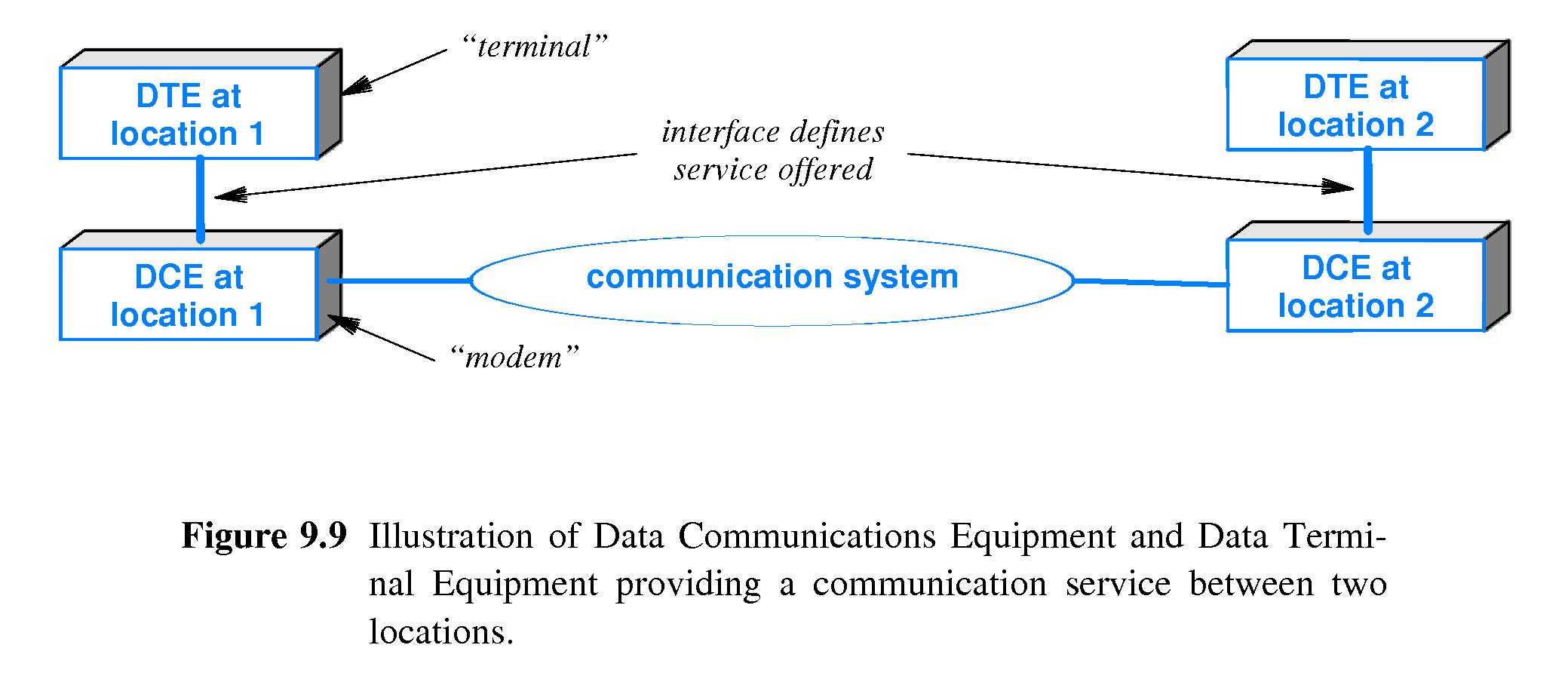(rev. Feb 17, 2015)
Notes On Chapter Nine
-- Transmission Modes
- 9.1 Introduction
- Ways data is transmitted
- Serial and Parallel
- Synchronous and Asynchronous
- 9.2 A Taxonomy of Transmission Modes
- Serial transmission is sending one bit at a time
- Parallel transmission is sending multiple bits at the same time over
separate media
- Taxonomy:
- Parallel
- Serial
- Asynchronous
- Synchronous
- Isochronous
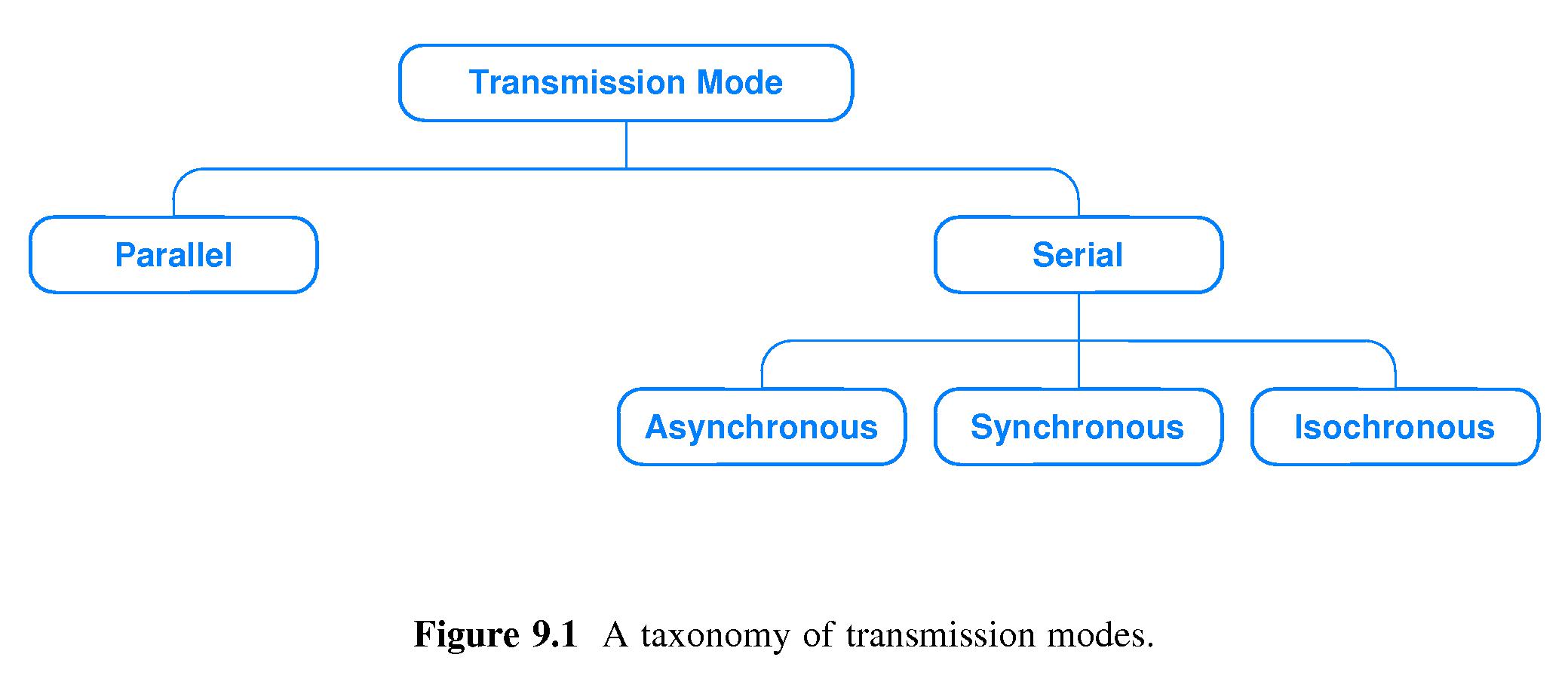
- 9.3 Parallel Transmission
- The idea of parallel transmission: send 8 bits at exactly the same
time, over 8 separate wires.
- Besides the 8 data lines there are one or more control lines - wires
to be used by sender and receiver to coordinate.
- Advantages of parallel mode:
- High speed
- A good match to the underlying interface
(computers use parallel circuitry internally. )
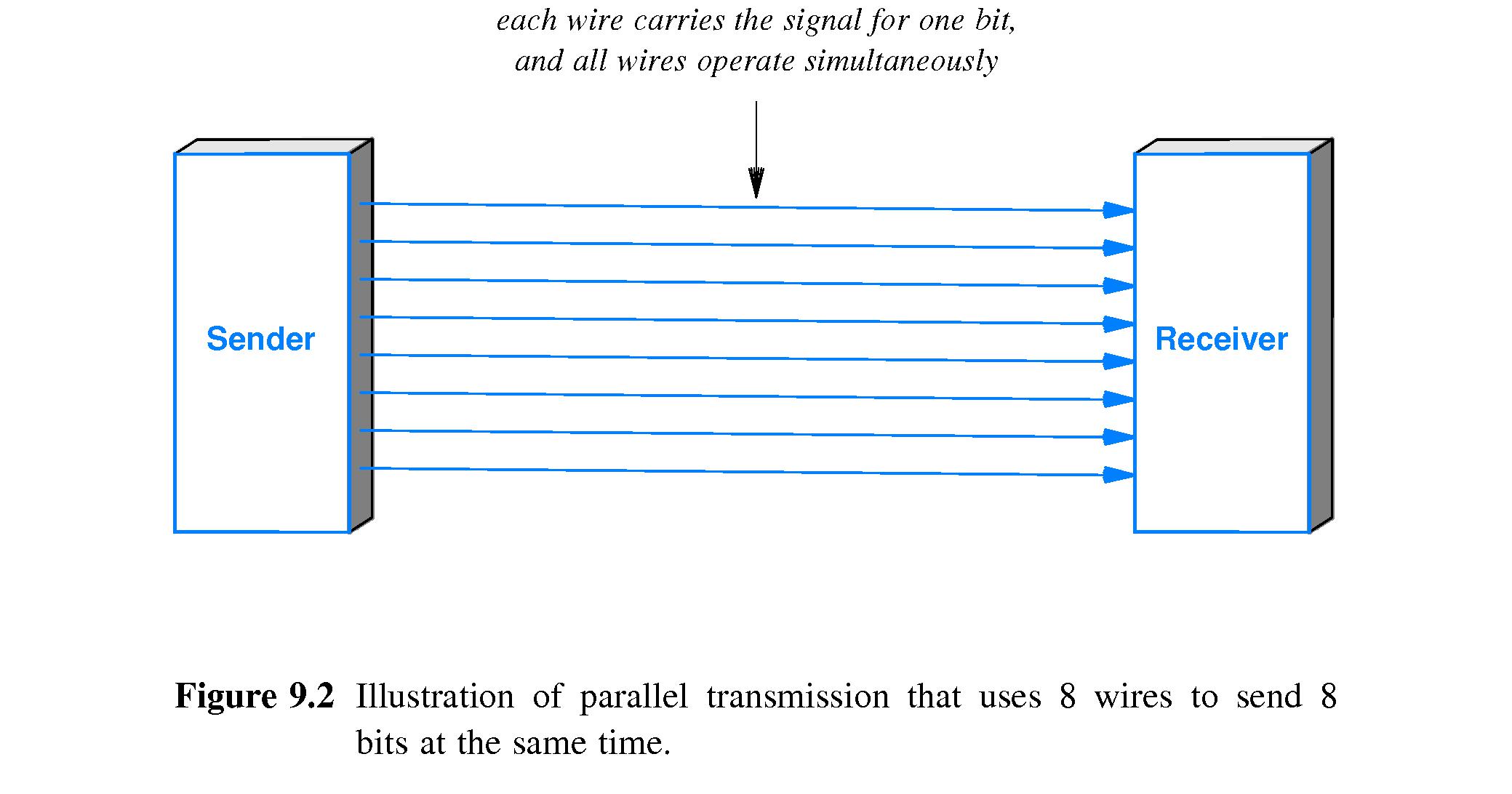
- 9.4 Serial Transmission
- Most communication systems use serial mode because
- it is cheaper to extend single-wire systems to long
distance, (fewer wires, simpler electronic components),
- parallel transmission is susceptible to
timing problems cause by slight differences in length between
data wires, and
- parallel communication lines generate noise at high data
rates that interferes with signals in other nearby wires.
- Universal Asynchronous Receiver and Transmitter (UART) or
Universal Synchronous-Asynchronous Receiver
and Transmitter (USART)
chips may be used to convert between the computer's
internal parallel format and the serial formats used for
communication.
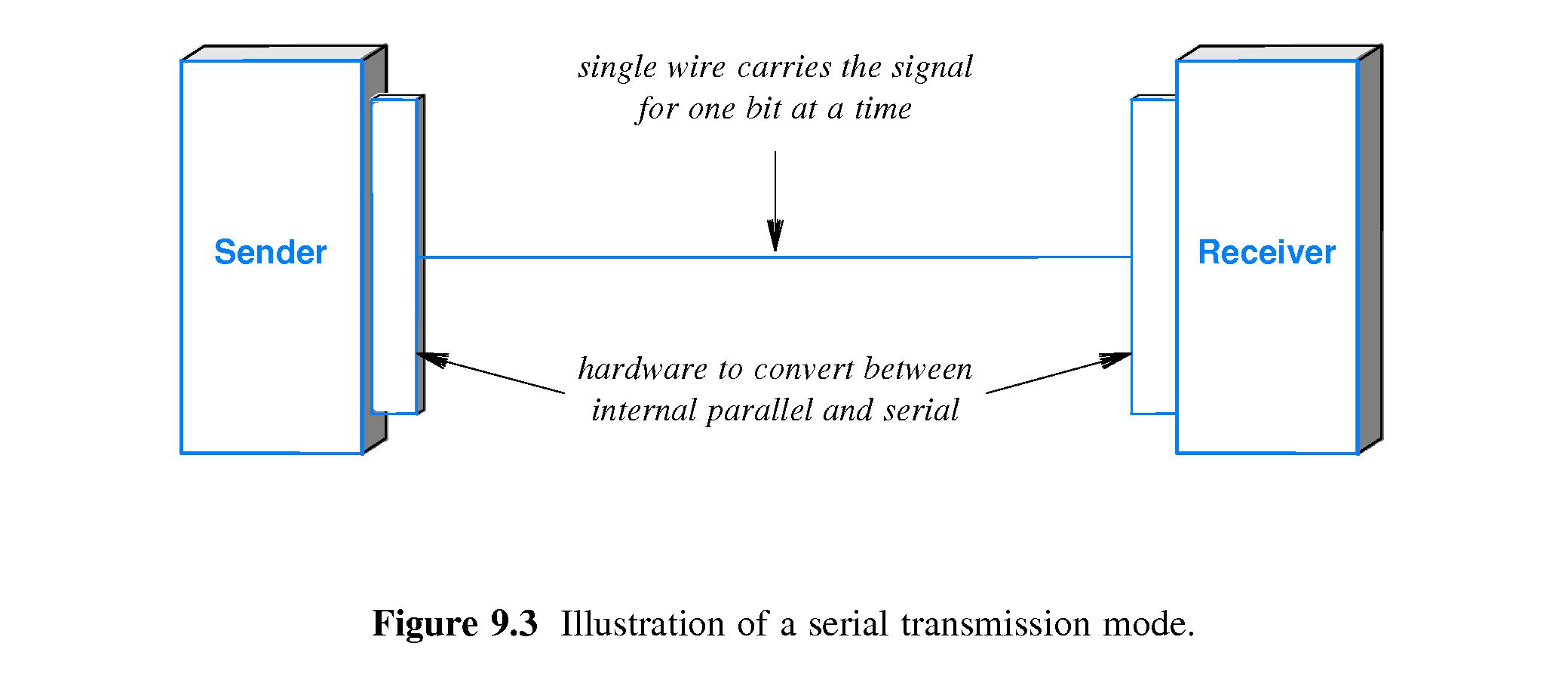
- 9.5 Transmission Order: Bits and Bytes
- Sender and Receiver have to agree on such things as which byte of an
integer will be transmitted first, and which bit of a byte is sent
first.
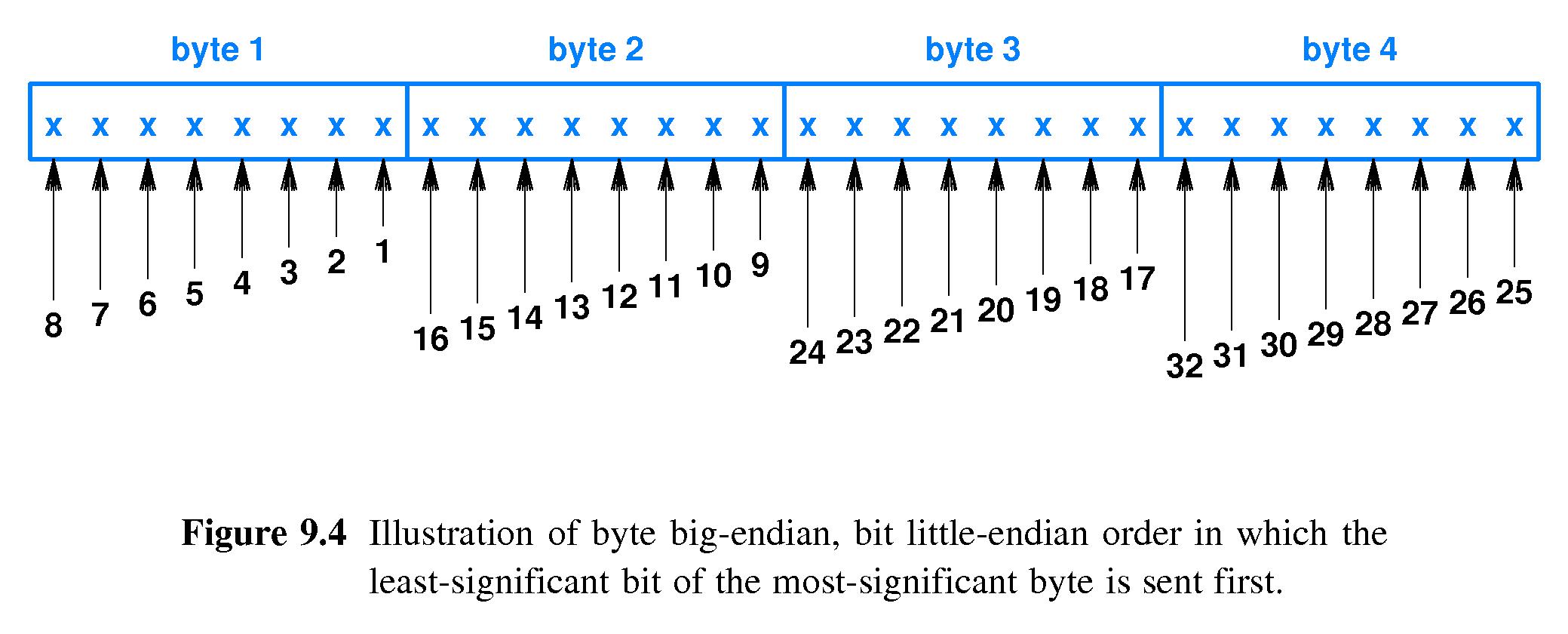
- 9.6 Timing of Serial Transmission
- Asynchronous - transmission at any time, with arbitrary delay between
transmission of any two successive data items.
- Synchronous - continuous transmission with no gaps between
transmission of successive data items.
- Isochronous - transmission at regular intervals with a fixed gap
between the transmission of successive data items.
- 9.7 Asynchronous Transmission
- Asynchronous: the system allows the physical medium to be idle for an
arbitrary time between successive data transmissions.
- When transmitting data, usually the sender starts with extra bits
called "start bits" or a "preamble" before sending the data. This allows
the receiver to "synchronize with the signal."
- 9.8 RS-232 Asynchronous Character Transmission
- RS-232 is a still widely used standard for sending characters
asynchronously over a wire by transmitting bits serially, although
USB is used instead of RS-232 in many applications.
- According to RS-232, the sender holds the line low (-15 volts) when
idle. There is a certain duration of time T for sending a bit. When
starting to send a character, the sender holds the line high (at +15
volts) for time T. This allows the receiver to detect that a
character will be coming. Next the sender impresses each bit of the
character on the line - time T each, with no spacing in between bits.
Low means "1" and high means "0." After transmitting the last bit
of the character, the sender brings the line low for at least time T,
after which it may send another character when it wishes.
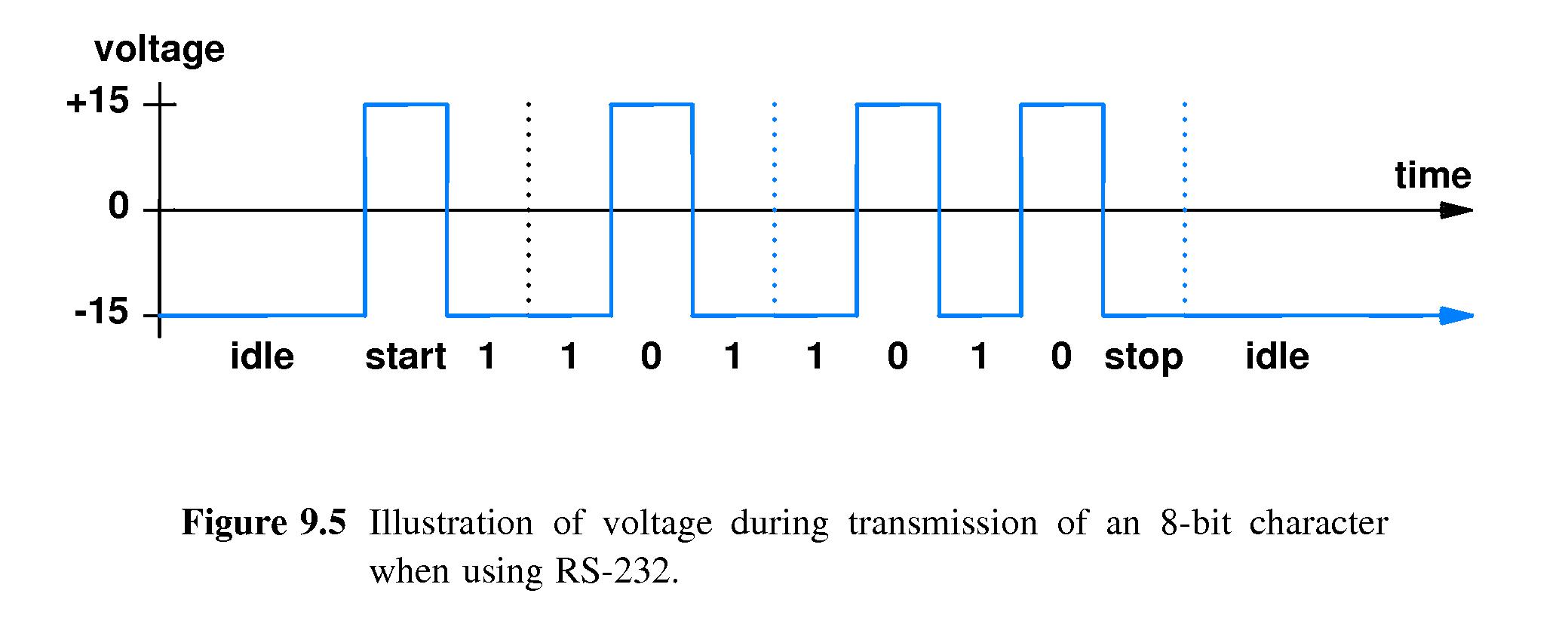
- 9.9 Synchronous Transmissions
- Using synchronous transmission, a sender transmits bits continually
with no idle time between successive bits.
- Typically fewer "extra bits" are required - such as the the start and
stop bits added to every character according to the RS-232 protocol.
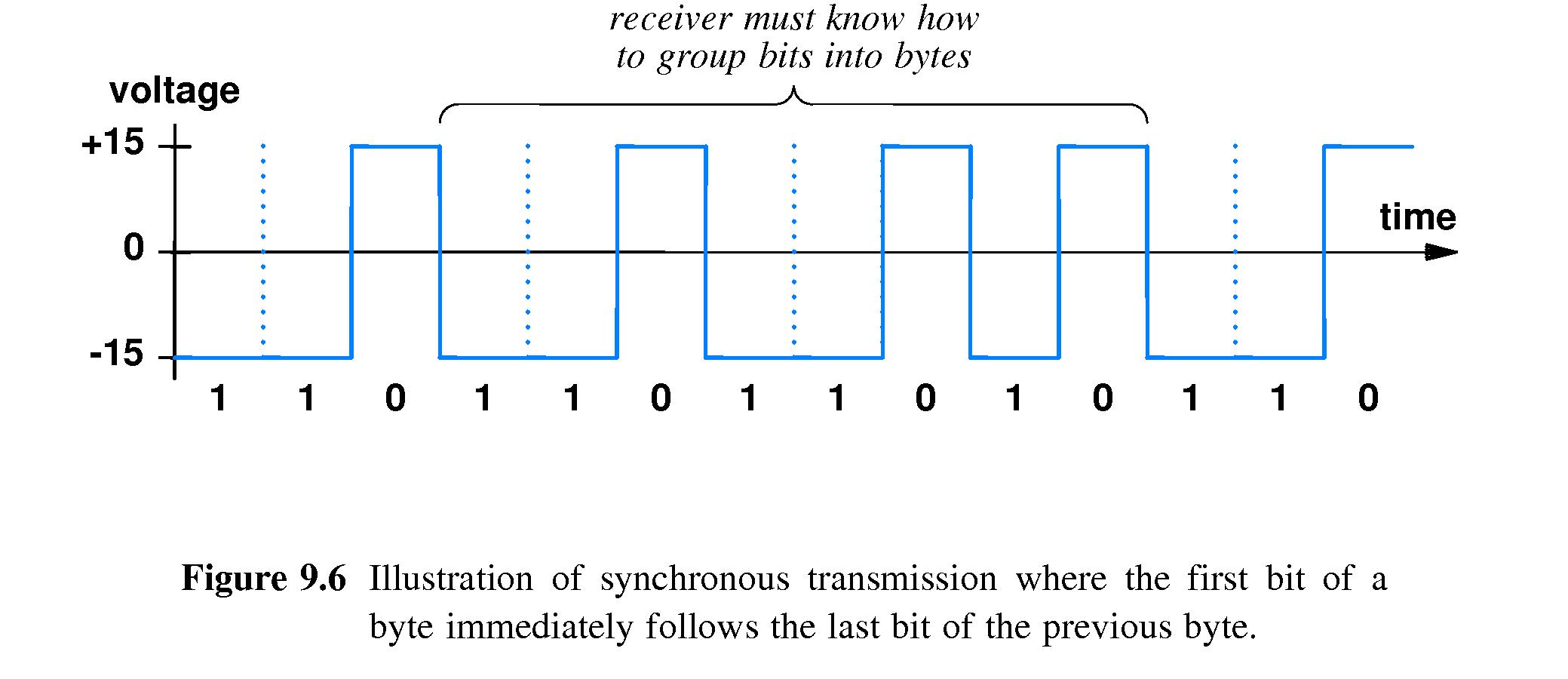
- 9.10 Bytes, Blocks, and Frames
- Typically synchronous systems send bytes in groups called frames.
- To help sender and receiver stay synchronized, a frame starts
with a special pattern of bits
- Usually when the sender has no data to send, it transmits a
special idle sequence
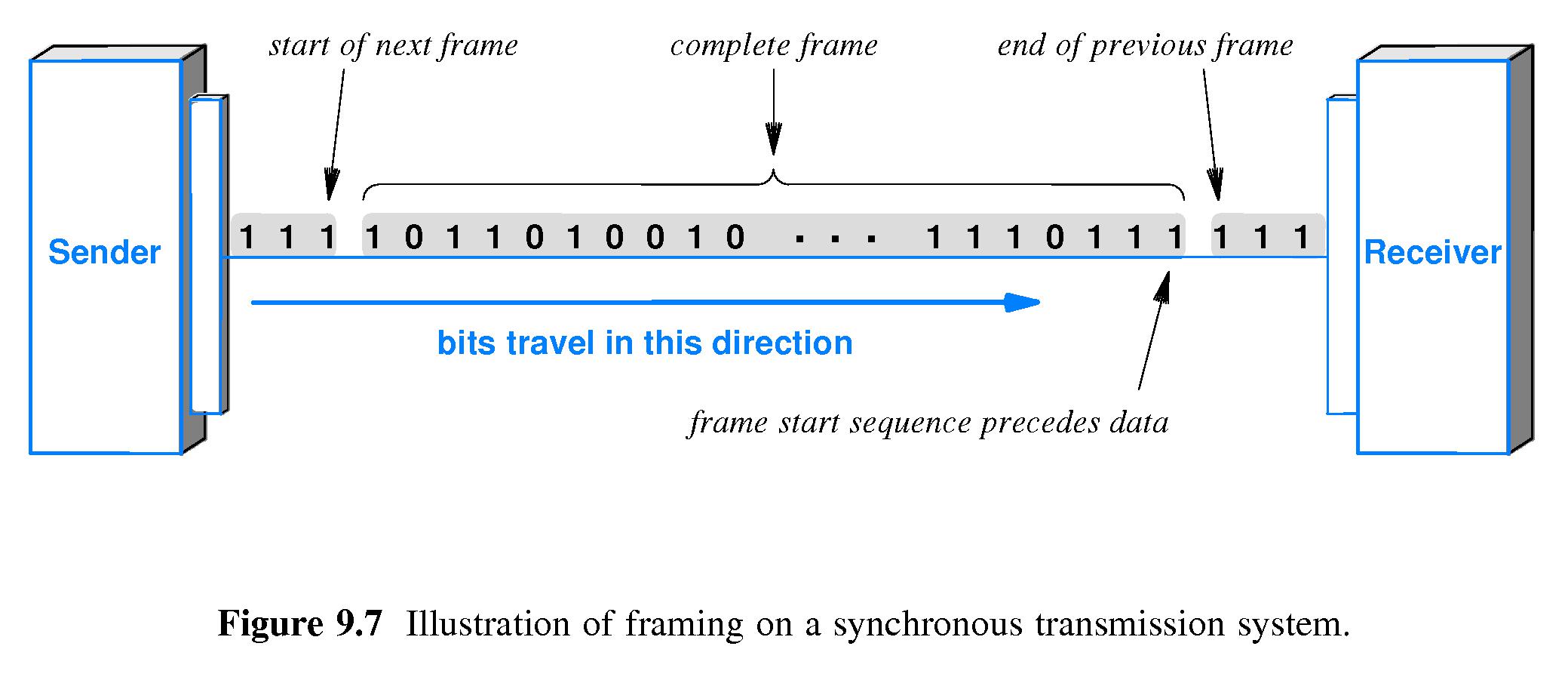
- 9.11 Isochronous Transmission
- A form of synchronous transmission designed to accept
and send data at a fixed rate.
- Applications: bit flow for multimedia containing
voice, or video.
- 9.12 Simplex, Half-Duplex, and Full-Duplex Transmission
- A simplex mechanism is capable of sending information in
one direction only. A sender transmits on a simplex communication
medium, but it cannot receive data on that medium. Simplex works
kind of like a one-way street.
- Full duplex transmission allows simultaneous data flow in either
direction between two points - kind of like a two-way street.
- Half-duplex allows communication in both directions, but not at the
same time. The two sides have to take turns transmitting on the
link. (Sometimes street or road traffic works like this when one
lane of a two-way street has been closed for construction.) There
has to be some sort of mechanism built into the protocol that makes
sure only one side is transmitting at a time (collision avoidance).
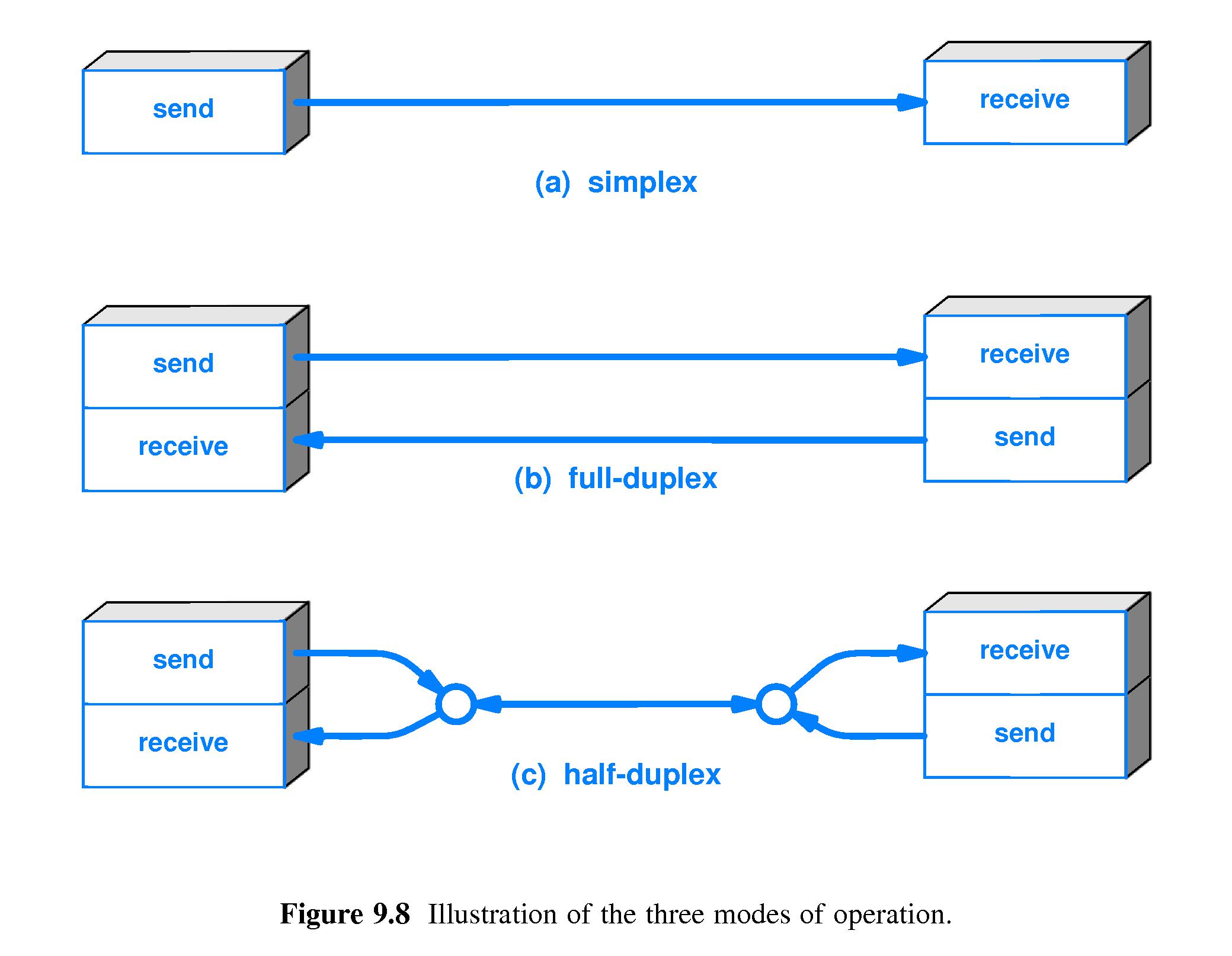
- 9.13 DCE and DTE Equipment
- To create a network connection, a
business can lease a data circuit from a phone company.
- The phone company installs "DCE" equipment attached to the "leased
line."
- The business purchase DTE equipment that attaches to the DCE
equipment.
- RS-232, RS-449, and X.21 are among the protocols that may be used
for communication between DCE an DTE.
- The interface to the DCE may be synchronous or isochronous.
